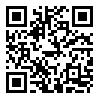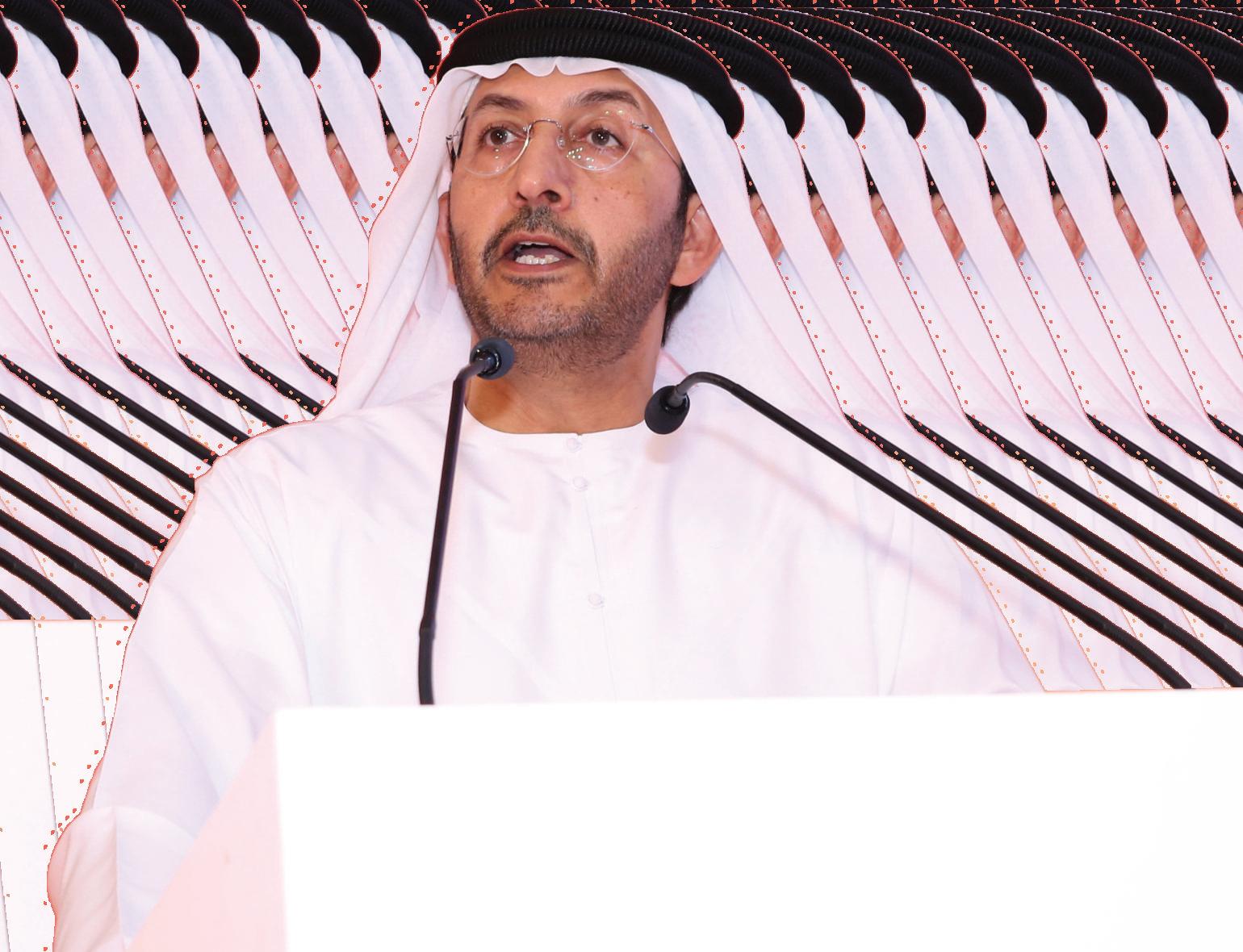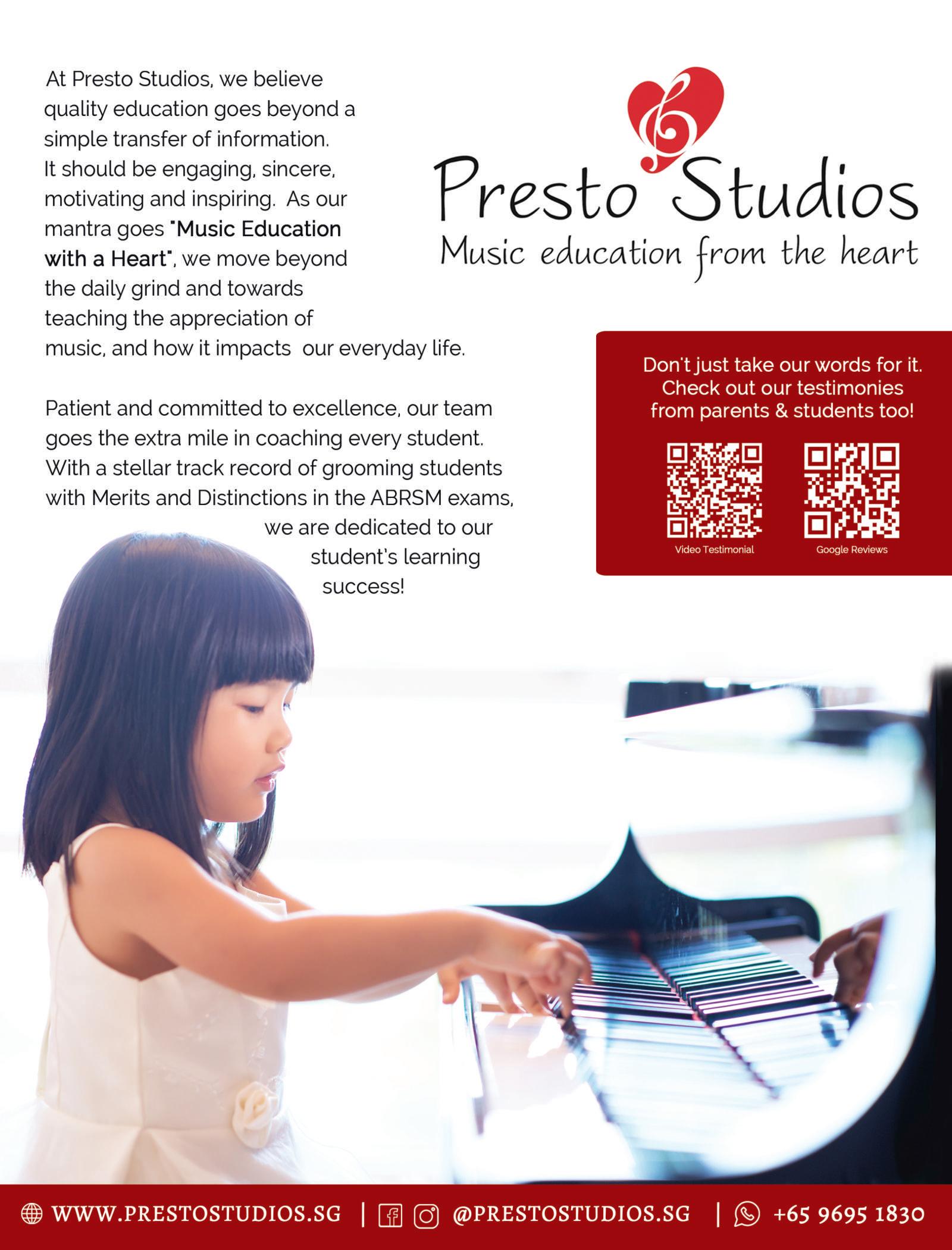STEM to STEAM
How Interdisciplinary Leadership Enhances Student Learning?
Breaking Down Silos for Innova�on
Interdisciplinary Leadership in Higher Educa�on






P e r s p e c t i v e

STEM to STEAM
How Interdisciplinary Leadership Enhances Student Learning?
Breaking Down Silos for Innova�on
Interdisciplinary Leadership in Higher Educa�on






P e r s p e c t i v e
In a world increasingly driven by technology and rapid change, it’s
refreshing and deeply inspiring to pause and reflect on individuals who have shaped that very evolution with integrity, vision, and heart. Our recent edition of Enterprise review titled, System Thinker, Animal Lover: The Story of Richard C. Larson, celebrates one such icon whose legacy reachesfarbeyondacademiaandalgorithms.
Affectionately known as “Professor Queue,” Richard C. Larson has spent decades studying the systems that make our world tick from urban infrastructure to human behavior in crisis. But behind the data models and formulas lies a deeply humane thinker: one who has mentored generations, questionedwithpurpose,andalwaysledwithempathy
This issue doesn’t just chronicle his groundbreaking work at MIT and his pioneering efforts in operations research; it brings to light the unexpected passionsthatmakehimwholeadeeploveforanimals,areverencefornature, andanunwaveringbeliefinnurturingcuriosity
Larson’sjourneyisnotmerelyoneofacademicbrilliance.It’sablueprint for what it means to integrate intellect with compassion, systems with soul. Through thoughtful interviews, archival insights, and personal anecdotes, we explore how his lifelong dedication to education, innovation, and kindness continues to inspire the next generation of thinkersanddoers.
Atatimewhentheworldcravesbothclarityandcompassion,RichardC. Larson’sstoryservesasatimelyreminder:thatthebestsystemsarebuilt notjustwithlogic,butwithlove.Weareproudtohonorhiminthisedition.
HappyReading!
o n t e n t


Breaking Down Silos for Innovation
Interdisciplinary Leadership in Higher Education
How Interdisciplinary Leadership Enhances Student Learning?
Managing Editor Bill Limbert
Assisting Editor Joe Lee


www.twitter.com/enterprisereview.com/ www.facebook.com/enterprisereview.com/
Visualizer Stewart Jonas
Art & Design Director Robin Clarck
Associate Designer Authur Watson


Vice President Jil Kendal
Asst. Vice President Kevin Johnson
Asst. Manager Robert Hanson
Business Development Executive Thomas E.
Technical Head Andrea Jackson
Technical Specialist Mike Anderson
Technical Consultant Oliver Sutton
Research Analyst Wendy J.
SEO Lead Tasha L.


MIT Professor






“Whether through this book, his teaching, or his new professorship, Larson is ensuring that his work continues to influence minds beyond the walls of MIT.”
When someone dedicates their life to solving complex societal problems through research, education, and service, their legacy extends far beyond papers published or students taught Such is the case with Professor Richard “Dick” Larson, whose generous gift has established the Distinguished Professorship in Data, Systems, and Society at MIT This endowment is not just a financialcontribution—it’saprofoundstatementofpurpose, vision, and trust in the future of interdisciplinary collaboration. It also reaffirms Larson’s decades-long dedication to innovation at the intersection of data science, operationalsystems,andsocialimpact.
The creation of this endowed chair, effective July 1, is both a personal milestone and a strategic investment in MIT’s longtermacademicexcellence.NamedinfullastheDistinguished Professorship in Data, Systems, and Society, this role will supportaseniorfacultymemberwithintheInstituteforData, Systems,andSociety(IDSS).It’sapositionintendednotonly torewardexcellencebuttoserveasaplatformforleadership in interdisciplinary research and education. For Larson, this professorshipisameanstoperpetuatetheintellectualthemes thathavedefinedhisjourney

Fromelectricalengineeringinthe1960stocutting-edgedatadriven research today, Larson’s academic evolution embodies the very ethos of MIT adaptive, forward-thinking, and grounded in real-world impact His work has spanned emergencysystems,pandemics,smarthomes,andeducation reform, always grounded in the belief that data and systems thinkingcan—andmust—servesociety.Byestablishingthis chair, he ensures that future generations of researchers and educatorscancontinuethatmission.
Richard Larson’s academic path at MIT is a reflection of intellectual curiosity that knows no boundaries Beginning in electricalengineering,Larson'sfocusquicklyexpandedintothe emerging field of operations research. But unlike traditional trajectories,hecontinuedtoreinventhimself—notonce,but repeatedly.Overthedecades,hecontributedtofivedifferent MIT departments, aligning his work with pressing societal needs each time. His journey ultimately culminated in the IDSS — a space where data, systems, and social challenges converge.
AccordingtoLarson,thethreewordsintheIDSSname data, systems, society are not just institutional branding; they represent the essence of his second-half career focus. His professorship gift is a way to keep these principles vibrant withintheacademiccommunity “MIThasnotonlyaccepted butembracedmyseveralmid-careerchangesofdirection,”he reflects. “Those beautiful three words — data, systems, society — represent my energy and commitment. My gifted chairisanefforttokeepalivethosethreewords,withothers following me doing research, teaching and mentoring centeredarounddata,systems,society.”
Hisinfluencespanspracticalandtheoreticalrealmsalike From designing smarter emergency response systems to advocating for technology-enabled education platforms like MIT BLOSSOMS,Larsonhasconsistentlyoperatedattheinterface of need and solution. His gift is, in many ways, the culminationofthatapproach—institutionalizingthekindof scholarshipthattransformsideasintotangibleoutcomes.
EnablingtheFutureofInterdisciplinaryLeadership
The inaugural holder of the Richard Larson-endowed professorshipisProfessorSashaRakhlin,arespectedscholarin both IDSS and MIT’s Department of Brain and Cognitive Sciences. His work, which integrates statistics, computation, andmachinelearning,exemplifiestheinterdisciplinaryvision
“Larson’s career has never been confined to academic theory. His work has always found application in real-world systems, especially those that affect public welfare.”
Larson has long championed. Rakhlin's research focuses on foundationalaspectsoflearning—analyzingneuralnetwork complexityanddevelopingtoolsforsequential(or"online") prediction It’s precisely the kind of forward-thinking scholarshipthatthenewchairaimstosupport.
IDSSDirectorFotiniChristianotesthesymbolicimportanceof Larson’sgift.“DickLarsonhasbeenmakinganimpactatMIT for over half a century This gift extends his already considerablelegacyandensureshisimpactwillcontinuetobe feltformanyyearstocome.”ThechoiceofRakhlinasthefirst to hold this position reflects both scholarly excellence and a commitmenttothecross-disciplinarymissionofIDSS.
Professor Michael Fee, head of the Department of Brain and CognitiveSciences,echoesthissentiment:“Sasha’sanalysisof neuralnetworkcomplexity,andhisworkdevelopingtoolsfor online prediction, are perfect examples of research which buildsbridgesacrossdisciplines,andalsoconnectsdifferent departmentsandunitsatMIT.”Healsohighlightsthebroader collaborativespiritthattheprofessorshipisdesignedtofoster — one that not only connects departments, but also propels innovationwithsocietalrelevance.




“According to Larson, the three words in the IDSS name — data, systems, society — are not just institutional branding; they represent the essence of his second-half career focus.”

Larson’scareerhasneverbeenconfinedtoacademictheory His work has always found application in real-world systems, especially those that affect public welfare His pioneering researchinurban service systems — particularly emergency response mechanisms — has saved lives. He has advised governments and public organizations on disaster planning and public health systems, with special focus on pandemics and crisis response. Larson’s insights have informed how cities plan ambulance routing, police dispatching, and more recently,howtechnologycanmakehomessmarterandenergy usemoreefficient.
His contributions extend to workforce planning and the logisticsofpublicservices,areaswheremathematicalmodels intersectdirectlywithhumanlives.Larsonhasalsoplayedan instrumentalroleinreshapingSTEMeducation.ThroughMIT BLOSSOMS (Blended Learning Open Source Science or Math Studies), he has developed high-quality video lessons aimedatsecondaryschoolstudentsworldwide.Theseefforts are rooted in his firm belief that access to education — particularlyindataandsystemsthinking—isfundamentalto societalprogress.

Hismostrecentbook,ModelThinkingforEverydayLife,distills decades of academic knowledge into accessible tools for broader audiences In it, Larson presents operations research andsystemsmodelingasessentiallifeskills—demonstrating how mathematical thinking can inform decision-making in everyday contexts.Whether through this book, his teaching, or his new professorship, Larson is ensuring that his work continuestoinfluencemindsbeyondthewallsofMIT.
Endowedchairsareamongthemostenduringcontributionsone canmaketoacademia Theycreateaperpetualsourceofsupport forfaculty,oftenattractingandretainingtoptalent InLarson’s case,thechairisadirectextensionofhisvisionforIDSS.It symbolizesabeliefthatinterdisciplinarywork—especially thatwhichspansdata,systems,andsociety—isnotaluxury, butanecessityforaddressingtoday’scomplexproblems.
The timing of this gift is also significant As technological advancements accelerate, and as global challenges become increasinglyinterconnected,theneedforacademicleadership that can work across traditional disciplinary boundaries has never been more urgent.The Distinguished Professorship in Data, Systems, and Society will serve as a catalyst for such leadership—empoweringscholarstoinnovatefreely,mentor thenextgeneration,andpursueworkthatbridgestheoryand practice.
Rakhlin,nowthestandard-bearerofthisvision,acknowledges the weight of that responsibility. “I am honored to be the inaugural holder of the Distinguished Professorship in Data, Systems, and Society,” he says. “Professor Larson’s commitment to education and service to MIT both serve as modelstofollow.”Inmanyways,thismomentrepresentsthe passingofatorch—fromonepioneeringscholartoanother, with the future of interdisciplinary science at MIT all the brighterforit.
Teaching,Mentorship,andIntellectualGenerosity
OneofthehallmarksofLarson’scareerhasbeenhisdedication to mentorship. Over the years, he has advised countless students, many of whom have gone on to become leaders in academia, government, and industry His generosity with time, ideas, and encouragement has had a ripple effect far beyond his direct collaborators. That spirit of mentorship is embedded in the new professorship which not only supports research but also emphasizes the value of teaching andguidingyoungminds.
ThiscommitmenttomentorshipisreflectedintheethosofIDSS itself, where faculty are encouraged to integrate education, service, and research The professorship, in supporting senior faculty, ensures that experienced scholars like Rakhlin can devote time and resources not just to their own work, but to fostering community within MIT and beyond. In that sense, thegiftisnotsimplyaninvestmentinoneperson,butinthe collectivegrowthofalearningecosystem.
By institutionalizing his values through this professorship, LarsonhastakenapersonallegacyandmadeitpartofMIT’s ongoing story His name, now permanently attached to a position of leadership in data, systems, and society, will remind future generations of scholars that great research begins with curiosity, is sustained by integrity, and is made meaningfulthroughservice.
Richard Larson’s establishment of the Distinguished Professorship in Data, Systems, and Society is not just a philanthropicact it’sadeeplypersonalreflectionofalifetime dedicated to meaningful inquiry and purposeful action. It stands as a beacon for the kind of work MIT strives to champion: research that doesn’t just live in journals but changestheworld.
BysupportingfacultylikeSashaRakhlinandenablingthemto continue their groundbreaking research, Larson has ensured thatthevaluesheholdsdearwillcontinuetothrivewithinMIT’s academic framework. The professorship is a powerful reminder that individual generosity can fuel collective progress—andthatthetruemeasureofascholarisnotonly what they discover but also what they enable others to achieve.
Asthefieldofdata,systems,andsocietygrowsincomplexity and importance, this endowed chair will serve as both anchor andcatalyst—rootedinLarson’slegacyandreachingtoward thefuture.






Intoday’srapidlyevolvingworld,technologyisnolonger a luxury, it’s a lifeline. From the way we work and communicate to how we educate, heal, and build businesses, technology integration has become central to progress. Yet, while the idea of embedding technology into everydayprocessessoundsseamlessintheory,thereal-world journey of integrating it effectively is layered, dynamic, and deeplyhuman.
At its core, technology integration is the thoughtful and strategic use of digital tools to enhance, streamline, and transform traditional processes. It is not simply about acquiring the latest gadgets or subscribing to cloud-based service,it’saboutembeddingtechnologyinsuchawaythatit augmentshumanexperience,improvesoutcomes,andcreates long-termvalue.
For example, a school that replaces chalkboards with smartboards and tablets is only beginning the journey True integration happens when teachers use these tools to foster
critical thinking, collaboration, and personalized learning. Similarly,inthehealthcaresector,it’snotenoughtodigitize patient records Integration means ensuring doctors can accessdatainrealtime,improvingdiagnosis,treatment,and patientengagement.
One of the most underestimated elements of technology integrationisthehumanaspect.Systemscanbeimplemented overnight, but changing mindsets takes time. Resistance to change,lackoftraining,andfearofobsolescencearecommon hurdles. That’s why any integration effort must begin with empathyandendwithempowerment.
Leaders must prioritize communication, training, and support.Technologyshouldnotbeforceduponpeople;rather, itshouldbeintroducedasatooltomaketheirliveseasierand more fulfilling In organizations where integration has succeeded, there’s often a culture of trust, openness to experimentation, and a shared belief in the value of digital tools.
Despitethepromiseoftechnologyintegration,thepathisfar from smooth Legacy systems, budget constraints, cybersecurity risks, and the rapid pace of innovation often complicate implementation efforts Many organizations strugglewithbalancingwhat’snewwithwhatalreadyexists. Thefearofadoptingthe“wrong”toolormovingtoofastcan leadtoinactionorhalf-heartedefforts.
Moreover, there’s no one-size-fits-all approach.What works foratechstartupmaynotsuitapublicschoolorahealthcare institution That’s why customization, scalability, and alignmentwithorganizationalgoalsarevital.Successliesnot in doing what’s trendy, but in adopting what truly fits the uniqueneedsoftheorganizationanditspeople.
Tonavigatethecomplexlandscapeoftechnologyintegration, a clear and adaptive strategy is essential. This begins with assessingneedsandwhatarethepainpointsthattechnology canaddress?Oncetheseareidentified,thenextstepinvolves selectingtherighttools,notbasedonpopularity,butonhow welltheyintegratewithexistingworkflows.
Equally important is stakeholder involvement. Whether it’s employees, customers, patients, or students, the end-users must be part of the conversation. Their insights can inform betterdecisionsandensurehigheradoptionrates.Continuous training, feedback loops, and periodic evaluations also keep thesystemresponsiveandeffective.
Organizationsshouldalsoembraceaphasedapproach.Trying to overhaul everything at once can be overwhelming and counterproductive.Instead,integratingtechnologygradually allowsforadjustments,learning,andgreateracceptance.This alsohelpsinmanagingrisksandcontrollingcosts.
TheRoleofLeadershipandVision
Visionary leadership plays a pivotal role in successful technology integration. Leaders must be willing to learn, unlearn,andrelearn.Theyshouldsetthetonebybeingearly adoptersthemselves,whilealsofosteringaculturethatvalues experimentationoverperfection.
Moreover, leadership must articulate a clear “why.” People aremorelikelytoembracechangewhentheyunderstandits
purpose.Whenemployees,forinstance,seethatanewCRM system will reduce administrative burden and help build bettercustomerrelationships,theyaremorelikelytoadoptit wholeheartedly
Transparency,patience,andcontinuousengagementarekey Integration is not a project with a fixed deadline, it is an ongoing process that evolves with time, feedback, and innovation.
As artificial intelligence, machine learning, the Internet of Things (IoT), and virtual reality continue to develop, the landscape of technology integration will only grow more complexandmoreexciting.Thefutureisnotjustaboutdigital transformation,butaboutintelligent,humanetransformation.
We will see smarter classrooms, more connected hospitals, adaptive business systems, and communities that thrive on data-driveninsights.However,withthisfuturecomesgreater responsibility Ethical considerations, data privacy, digital equity, and environmental impacts must be part of the conversation.
Technologyintegrationisnotadestination;it’sajourney One that requires vision, flexibility, empathy, and an unwavering commitmenttoimprovement.Itisasmuchaboutsystemsasit is about people. When done right, it can unlock potential, boostefficiency,andcreatemeaningfulchange.
Ultimately, it’s not the technology itself that transforms a business,aschool,orasociety,it’showwechoosetointegrate it.Powerliesinusingtoolsnottoreplacehumaneffort,butto enhanceit,makingourlivesnotonlyeasier,butbetter







Intoday'scomplex,interconnectedworld,theboundaries between disciplines are becoming increasingly blurred. Whetherintheworkplaceortheclassroom,problemsare rarely confined to a single domain of knowledge. Education systems around the globe are recognizing this shift and adjusting their teaching approaches accordingly One of the most impactful developments in this area is the rise of interdisciplinaryleadershipineducationalsettings.
Interdisciplinary leadership refers to a collaborative, crossboundary style of leadership that draws from multiple disciplines to create well-rounded, inclusive, and dynamic learning environments. When implemented effectively, this approach can significantly enhance student learning outcomes, foster critical thinking, and prepare learners for real-worldchallenges.
Traditional education has long compartmentalized knowledge mathematics in one room, literature in another,
andsciencedownthehall.Whilethisapproachhasitsbenefits in building deep, focused expertise, it often limits students’ ability to make connections between ideas. Interdisciplinary leadershipstepsintobridgethisgap.
Leaderswhoadoptthismodelencouragecollaborationacross departmentsandintegratecurriculumelementsinawaythat allows students to see the bigger picture. For instance, a history teacher working with a computer science instructor might co-design a project where students build digital timelines using coding techniques. This approach not only reinforcesconceptsfrombothsubjectsbutalsohelpsstudents understand how knowledge areas interact in real-world scenarios.
One of the most significant advantages of interdisciplinary leadership is its ability to nurture critical thinking. When students are challenged to approach a topic from multiple perspectives, they must evaluate, synthesize, and apply
22 | July, 2025 | www.enterprisereviewmedia.com
diverse forms of information. This depth of engagement encouragesthemtothinkbeyondsurface-levelanswers.
Consideraunitonclimatechange.Underatraditionalmodel, this might be addressed solely in a science class. With interdisciplinaryleadership,however,thesubjectcouldspan across science, economics, ethics, and political science. Students might explore the scientific causes of global warming, debate ethical responsibilities, analyze economic impacts, and evaluate public policies. Such comprehensive engagement develops higher-order thinking skills that are essentialforlifelonglearning.
In the real world, successful teams are composed of people from various backgrounds and areas of expertise. Interdisciplinary leadership mirrors this structure in the classroom, providing students with opportunities to collaborateindiverseteams.
Group projects led under an interdisciplinary framework demand communication, empathy, and mutual respect Studentslearntoarticulatetheirideasclearly,listenactively, and negotiate differences.Thesesoft skills often overlooked in traditional teaching—are among the most sought-after traitsintoday'sjobmarket.
Moreover, when educators themselves model interdisciplinary collaboration, it sets a powerful example. Students witness firsthand how professionals can bring their unique skills together to solve problems creatively and effectively.
The benefits of interdisciplinary leadership extend beyond student learning it also empowers teachers Educators workingwithinthismodelareencouragedtostepoutoftheir silos, explore new methods, and co-create knowledge with theirpeers.
This collaborative environment boosts teacher morale, promotes professional growth, and leads to innovative pedagogical practices. Teachers become lifelong learners themselves,constantlyevolvingtheircrafttomeettheneeds of an ever-changing world. Their enthusiasm and curiosity naturallyspilloverintotheirclassrooms,inspiringstudentsto adoptasimilarmindset.
Perhaps the most compelling argument for interdisciplinary leadership in education is its alignment with real-world expectations.Today’s challenges from pandemics to climate change,fromtechnologicaldisruptiontoeconomicinequality are complex and multifaceted. They demand solutions that drawuponvariousdomainsofknowledge.
By immersing students in interdisciplinary learning experiences,educatorspreparethemtobecomeagilethinkers and problem-solvers. Students leave school not just with facts, but with the skills to ask better questions, seek out multiple sources of information, and collaborate effectively In essence, they become better equipped for both higher educationandtheworkforce.
Whilethebenefitsofinterdisciplinaryleadershipareclear,its implementationisnotwithoutchallenges.Curriculumdesign, assessmentmethods,andinstitutionalstructuresoftenneedto be rethought. Teachers may require additional training and time to plan interdisciplinary lessons. Administrators must foster a culture of collaboration and provide the necessary resourcestosupportthismodel.
Nonetheless, these challenges are not insurmountable. With visionaryleadership,ongoingprofessionaldevelopment,and a shared commitment to student growth, educational institutions can overcome these hurdles and create a more integratedandimpactfullearningenvironment.
Conclusion:ACalltoReimagineLearning
In a world where knowledge is no longer confined to tidy boxes,educationmustevolvetoreflectthecomplexityofreallife experiences Interdisciplinary leadership offers a transformativepathforward—onethatunitesdiversevoices, broadens intellectual horizons, and empowers students to thriveinanuncertainfuture.
By embracing this approach, schools and educators signal a willingnesstothinkbeyondtradition,toinnovate,andtoput students at the center of a richer, more meaningful learning journey It’s not just about combining subjects—it’s about cultivatingcuriosity,resilience,andtheabilitytoconnectthe dots. And in that, lies the true power of interdisciplinary leadership.





www.enterprisereviewmedia.com
